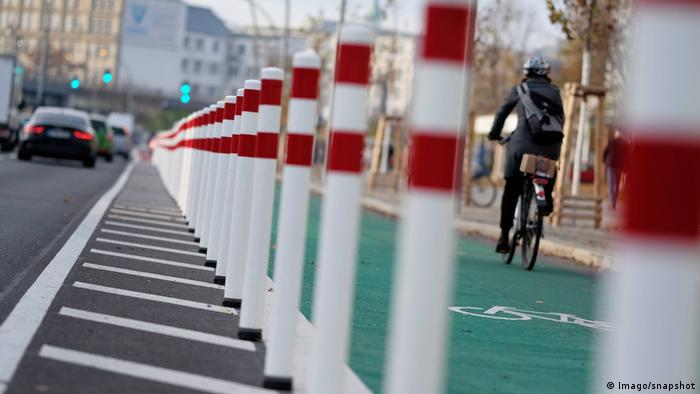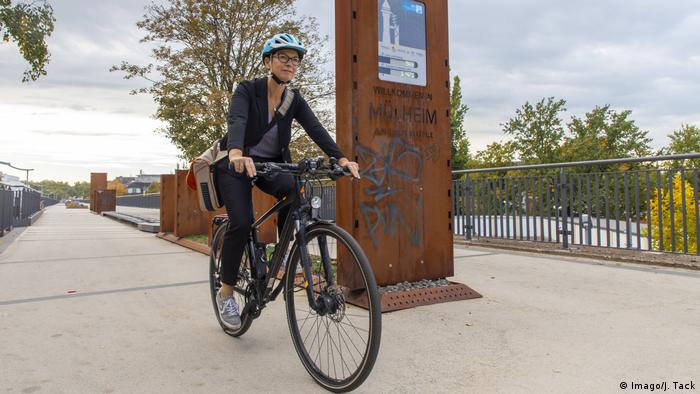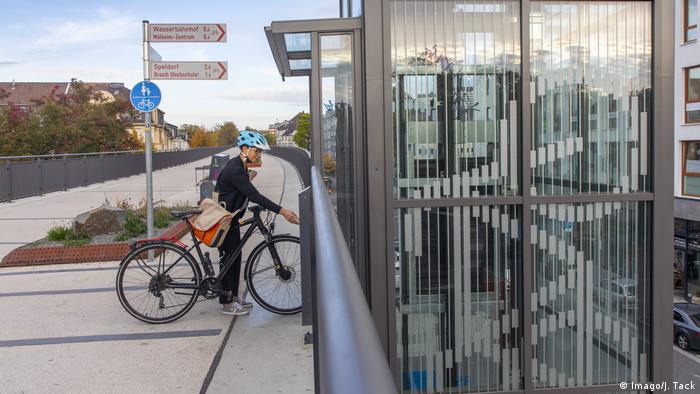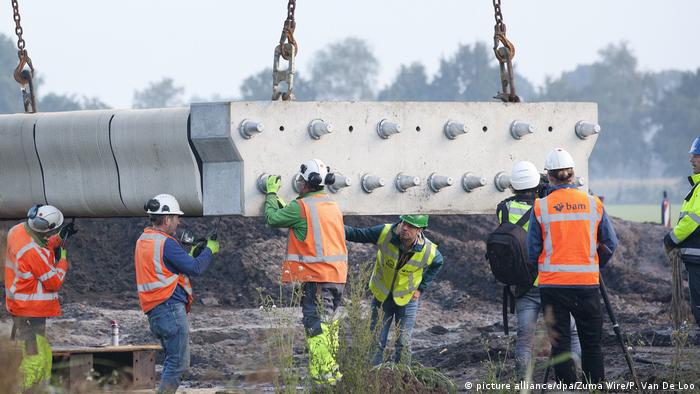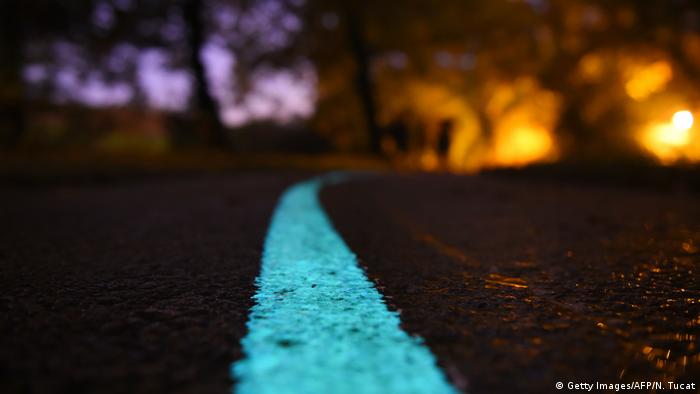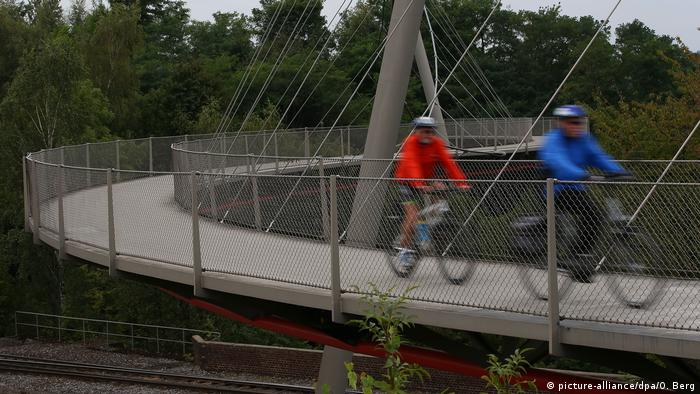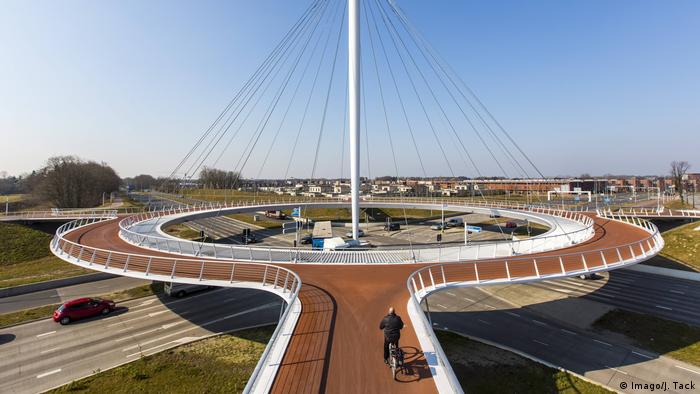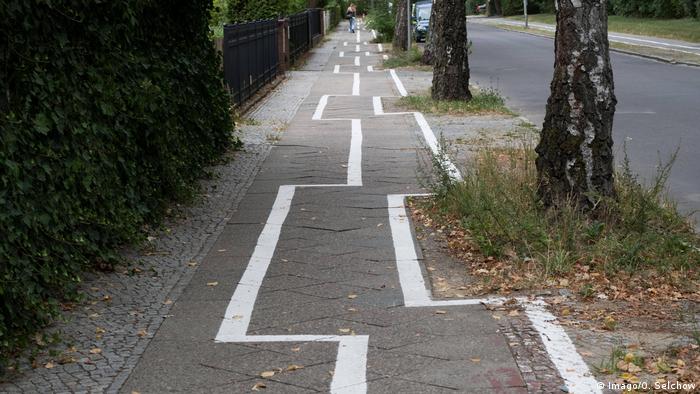Germany has its first path! If only as test routes that you can try nevertheless. Whether with the bike, the stroller, or on foot. A model for the Future – or is it too expensive?
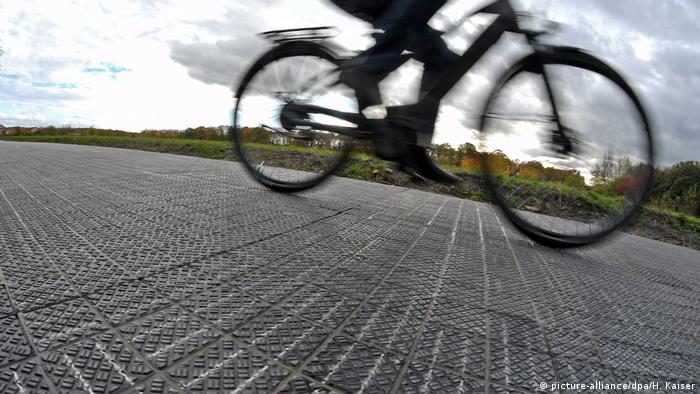
To the right of the fields, links, single family homes, winds in between a bike path through the neighborhood of Liblar in Erftstadt. Two cyclists pull out their phones to photograph the signpost: “the opening of the first Solarwegs of Germany”.
Many small solar tiles from a knobbed safety glass form a kind of carpet that one has on the Asphalt rolled out: “The roots of a 35-year-old bike path with bumps and tree,” says the inventor of the solar carpet and founder of the start-up Solmove, Donald, Müller-Judex. “We have him, as he is covered with photovoltaic”. Attaching the stock is a significant advantage of the new technology, because a street pick up or build new ones is expensive.
Each of the 10 times 10 centimeters large tiles, a solar cell, which is interlocked with a tissue electrically and mechanically connected to the other flexible. A layer of rubber absorbs the sound and connects the carpet to the substrate.
The idea came to the engineer Müller-Judex, as he sought a few years ago in the Allgäu region to open areas for solar installations. All suitable roofs were occupied, there were plenty of lonely, sun-drenched streets. In Germany alone, 1.4 billion square feet of little verse, bike lanes, side strips, driveways and Parking areas for the production of energy shaded were available. Already sealed areas could be used twice.
Read more: Cycling in Germany is becoming more and more popular
Speaking of which, that’s Why Cycling is so healthy
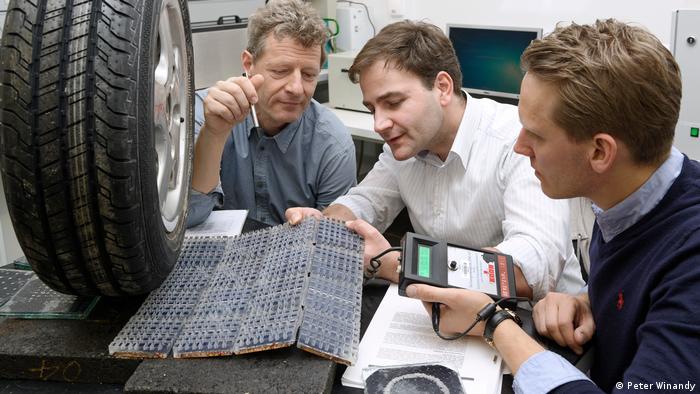
If the path holds promise of the lab tests will show
Less power output, but many of the functions
On horizontal modules, the solar radiation is not optimal for photovoltaics. “The solar street generates less electricity than the conventional solar PV on the roof,” says Luke Renken from the Institute of highway engineering RWTH Aachen. The Institute has examined the Solmove-covering in the laboratory. As well as similar technologies, such SolaRoads from the Netherlands. Roads-power plants currently being built in several countries: The implementation differs mainly in the construction and the installation of the panels.
The advantages of the innovative patch Renken sees its multi-functionality: In the tile heating could be grinding for the Winter, LED lighting and later also induction loops for wireless Charging of E-vehicles can be installed. Or Sensors, which count the traffic and control circuit – for example, the traffic light.
The winter service can save the municipality on the test track – if the System works. The surface is thawed with the self-generated electricity. Otherwise, the electricity is fed into the grid or can be consumed by the local residents. Müller-Judex expects about 15,000 kilowatt-hours per year.
Read more: cooperatives: electricity generation of each
“We will watch the next time on the Monitor, and the income of the normal photovoltaic compare. There are two to three winters are required to test only the heating”. And also, as the plant with Frost, dirt, and exposure to get to grips with.
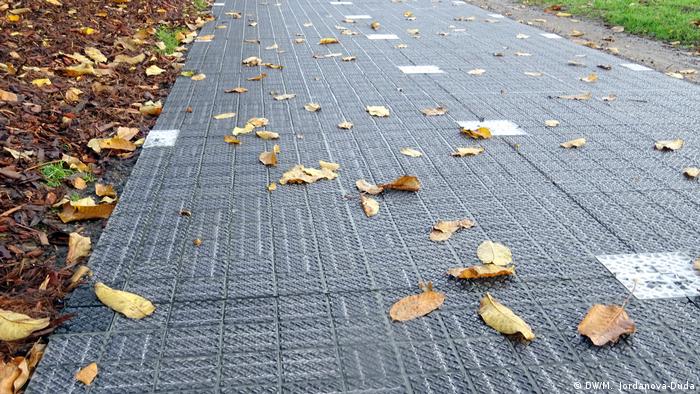
How resistant is the path against weather and dirt, it will show in the test phase
The surface should be clean thanks to the nubby structure itself: The Dirt collects in the joints and is washed away by the rain. Whether this is also the case in practice? Just a dog has made it. “We can’t test under laboratory conditions, Yes,” says Renken.
Counter-proposal to the brown coal mining
Around 800,000 Euro cost of construction, financed by the National climate protection initiative. The Federal environment Minister, Svenja Schulze will be happy to go not to Amsterdam or Copenhagen, but in the Rhenish province, the Eco-meet flagship project. She wants more of it.
Müller-Judex wants more support from the policy and state-owned venture capital for Cleantech Startups. “Our funding makes up about one-tenth of what it is in France or China”. Solar roads are to be built in far greater style. By 2020, the eponymous Startup installed 1000 kilometers “Wattway” in France. The government has increased the gasoline tax.
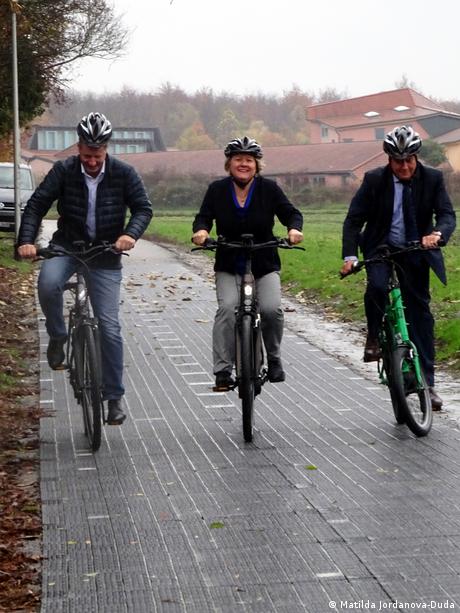
The Federal environment Minister, Svenja Schulze (center) is happy to be able to an Eco-showcase project in the home test
Also, the municipality Erftstadt does a lot of their routes to upgrade, they carried ten per cent of the costs themselves. “We have routes to many historical trails and former mining-railway and invest a lot of money into it,” says mayor Volker Erner. He says 100 percent clean energy, and without destroying the landscape. “Three years ago nobody would have thought that such a thing is possible”. The path is also a counter-design to the nearby brown coal area.
The solar street earns money
Critics of the project think that with all the money a number of conventional cycle lanes could be build or renovate. Vandals have smashed tiles in front of the opening a pair of glass. The test track is of course far more expensive than a future path of the rod.
For the series production of Müller-Judex anticipates 250 euros per square meter. This would be expected after twelve to 14 years, and then the surface would create a further ten years in power. The solar road is to be so cheaper than the normal, which causes only costs. The request is certainly large, especially from abroad. In China to ride at the Olympic Games in 2022 Shuttle buses 190 miles and inductive charging. This track is perhaps paved with Solmove-modules.
Read more: Renewable energy: China, Europe’s pioneering role
Innovations in road construction were implemented in Germany very hard to think RWTH-expert Renken: “The local authorities want to do anything wrong. It is important to cooperate with the authorities and to get an early boat”.


